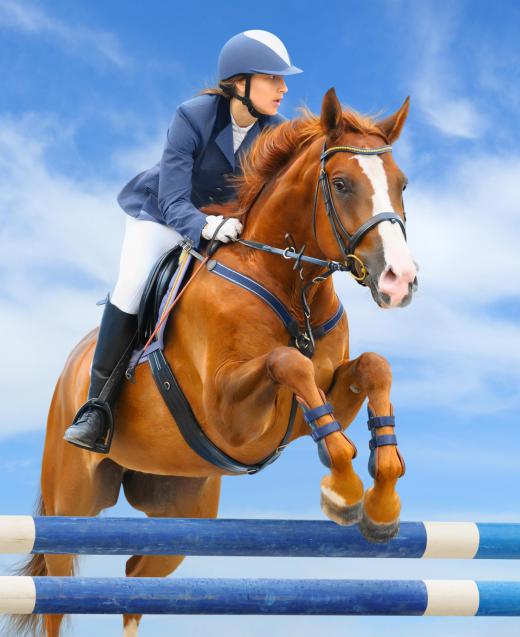English riding is a style of riding which has its roots in centuries of European riding tradition. This style of riding is used all over the world, and there are a number of branches of the English tradition. The other major main style of riding is Western riding, which uses different equipment and a slightly different approach to handling horses.
It is common to see people heavily emphasizing the differences between English and Western riding. In fact, these two riding disciplines are very similar. A rider who has trained in the English style can usually pick up Western riding very quickly, and vice versa. Both rely fundamentally on establishing clear communication between rider and horse, and working together as a team to accomplish goals.

The distinguishing characteristic of English riding is the English saddle, a flat saddle design which is designed to be as lightweight as possible. The idea behind this saddle design is that it allows a horse as much freedom of movement as possible, and it maximizes contact between horse and rider. There are a number of different English saddles on the market, ranging from lightweight horse racing saddles to specialized dressage saddles.

Horses trained in the English tradition respond to pressure on the bit, to cues from the rider's legs and feet, and to signals from a crop or whip. It is not uncommon to see riders using a double set of reins for greater control, sometimes with two bits. The seat in the saddle varies, depending on the rider's discipline: jumping, dressage, polo, and eventing, for example, all require different seats. English riding tends to be more formal, with a focus on correct seat, a good posture, and well turned-out horses.

English riding is often on display at the Olympics and other international equestrian competitions, because Western riding is mostly confined to the Americas. Horses trained in the English style tend to be trained to be extremely obedient, with less of a focus on freethinking, an important trait in Western horses. However, well-trained English horses are taught intelligent refusal, which involves teaching a horse to refuse to obey dangerous commands, for the safety of both horse and rider.

Dressage, widely described as “ballet for horses” is always performed on English trained horses and with English tack. Show jumping, racing, hacking, hunting, and polo are also events in which English riding is the norm. For disciplines like equitation, eventing, and trail riding, it is common to see a mix of Western and English riding.
